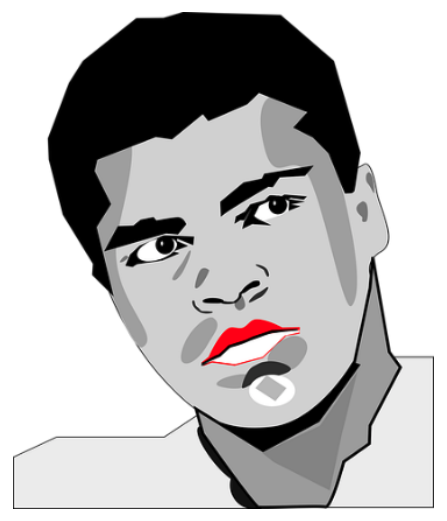Article by Rory Ziv
Overview
[1] There has been public disagreement about the issuance of arrest warrants by the International
Criminal Court “ICC” for the current Israeli Prime Minister Benjamin Netanyahu, and former Israeli
Defense Minister Yoav Gallant.1 These warrants are under appeal.2
[2] The main goal of the ICC as described by the ICC’s governing statute, “the Rome Statute”,3 is
laudable: to ensure that perpetrators of the most serious crimes against humanity, who cannot
otherwise be prosecuted in national criminal jurisdictions, are prosecuted.4 It is non-negotiable that
this objective is sound.
[3] The Canadian Prime Minister, Justin Trudeau, has publicly stated that he would without question
cooperate with the warrant process5 while the official opposition leader, Pierre Poilievre, has signaled
he does not approve of the warrants.
6 Some countries who are signatories with the ICC have indicated they would either not honour
the warrants or are non-committal.7
[4] Whether Canada should or should not endorse the warrants is beyond the scope of this paper.
However, Canada, as an independent sovereign country, should at least make its own inquiries and
conduct its own analysis. It does not benefit Canada to be passively compliant in partner with the ICC.
Canada’s international reputation and our international relationship with other countries, including
those who are and who are not members of the ICC, is paramount and certainly justifies our government
undertaking a fulsome and independent review of the ICC process that led to the arrest warrants that
we are being asked to support.
The Allegation
[6] On May 20, 2024, the ICC Prosecutor issued a public statement9 saying he was seeking the arrest
of Netanyahu and Gallant. In the statement, the following was alleged [emphasis added]:
My Office submits that these acts were committed as part of a common plan to use
starvation as a method of war and other acts of violence against the Gazan civilian
population as a means to (i) eliminate Hamas; (ii) secure the return of the hostages which
Hamas has abducted, and (iii) collectively punish the civilian population of Gaza, whom
they perceived as a threat to Israel.
The effects of the use of starvation as a method of warfare, together with other attacks
and collective punishment against the civilian population of Gaza are acute, visible and
widely known, and have been confirmed by multiple witnesses interviewed by my Office,
including local and international medical doctors. They include malnutrition,
dehydration, profound suffering and an increasing number of deaths among the
Palestinian population, including babies, other children, and women.
[7] From this statement it is apparent that one of the central allegations being made by the
Prosecutor was that Israel, as part of a common plan, was setting out to collectively punish the
population of Gaza and that the use of starvation was implemented.
[8] In support of the allegation, the Prosecutor adds: As an additional safeguard, I have also been
grateful for the advice of a panel of experts in international law, an impartial group I convened to support
the evidence review and legal analysis in relation to these arrest warrant applications.10
Assertion of Impartiality
[9] The Prosecutor advances a position of impartiality: “an impartial group I convened”. How did
the Prosecutor convene this panel of impartial experts? Who are they? Are they impartial? Why were
they chosen? Certainly, a random selection of experts would extinguish the appearance of bias and
ensure that an objective perspective was being relayed back to the Prosecutor – for the Prosecutor’s sake
and the appearance of neutrality.
[10] The legal arena is fraught with differing viewpoints on the issuance of the warrants. There are
dozens of legal briefs filed with the ICC by other international law experts refuting the ability of the ICC
to issue arrest warrants. Opposition to the warrants have formed mostly on traditional partisan lines
where countries like the United Kingdom (before their July 2024 election) and USA have filed legal briefs
disagreeing with or questioning the arrest warrant requests.11
[11] Even renowned International Lawyer Alan Dershowitz has publicly disagreed with their issuance
from a legal perspective,12 and has threatened to form a consortium of international experts to challenge
the ICC Prosecutor’s position.
Reasonable Apprehension of Bias: The Prosecutor
[12] In Canada, the law recognizes a concept called Reasonable Apprehension of Bias “RAB”. This is
different from actual bias. The question is not whether a decision maker is factually biased, but whether,
by their actions, the reasonable observer would have cause to question their impartiality.13 What
impression is left with the observer?
[13] There have been briefs filed with the ICC asserting actual Prosecutor bias. For example, Eli M.
Rosenbaum, former Director of the United States Department of Justice, Office of Special
Investigations14, concluded in his brief to the ICC: “[w]ith the OTP’s [office of the prosecutor] credibility
on the line, the Prosecutor should be required by your Honors to satisfactorily address the questions
raised herein regarding apparent bias, including whether OTP has unfairly applied to its Israeli targets
standards that it has not applied to others”.15
[14] This writer does not have to go as far as saying the Prosecutor or the expert panel he selected
is actually biased. Their actions do however suggest RAB.
Public Statement
[15] On May 20, 2024, the Prosecutor issued a public statement16 that he was seeking the arrest of
the Israeli officials. In a brief filed on behalf of the Office of Public Counsel for the Defence “OPCD”17, it
was pointed out that going public was not routine and impacted fair trial rights, including implicating
the presumption of innocence.18
[16] As stated by counsel for the OPCD: “While communications of the ICC Prosecutor to the press
are not barred, such pronouncement runs afoul of the aforementioned jurisprudence, is outside of usual
OTP practice, and runs contrary to advice of the Chambers Practice Manual …”. Why did the Prosecutor
decide to make public the issuance of the arrest warrants? His response to this charge was simply that
it was not the first time he had done so.19 Even so, making information public seems to be the exception,
not the rule and his response – that he is allowed to – falls short of a satisfactory answer.
[17] An OTP spokesperson explained that the matter went public because the Prosecutor had
“significant concern[s] regarding the ongoing nature of many of the alleged crimes cited in the
applications.”20
[18] Some may argue that going public by itself says nothing about an outward appearance of bias.
After all, the Prosecutor also asked for arrest warrants for Hamas leaders. This argument is weak. It
would be akin to saying the Prosecutor is fair and impartial because in addition to seeking warrants for
Winston Churchill, he also sought warrants for Hitler. Seeking a warrant for the latter is easy,
noncontroversial and obvious. Arresting Hitler or Sinwar doesn’t show impartiality. The Prosecutor
would have had no real decision to make regarding these fiends.
[19] In any event, in his public statement, the Prosecutor said: “I convened [an impartial group] to
support the evidence review and legal analysis in relation to these arrest warrant applications.” In fact,
there is a major flaw with the legal process used.
Complementarity has not been Analyzed
[20] First, the “evidence review” that the Prosecutor speaks of is not available for public scrutiny. He
compiled it, showed it to his experts, and then presented it to the judges, who then issued the warrants.
[21] What the panel was not asked to do was legally analyze whether the court should take the case
because of admissibility (complementarity) concerns. In fact, the first footnote of the panel’s decision
is that they did not advise on this issue.21
What is Complementarity?
[22] Recall, the objective of the ICC is to ensure that perpetrators of the most serious crimes against
humanity, who cannot otherwise be prosecuted in national criminal jurisdictions, are prosecuted.
[22] Paragraph 10 of the Preamble, Article 1, 17 of the Rome Statute22 addresses the issue of
complementarity, also known as admissibility. What this means is that if Israel is unwilling to investigate
and prosecute Israeli officials for war crimes then the ICC can intervene.
[23] The Prosecutor’s position is that the interpretation of the Rome Statute on the issue of
admissibility is not relevant when seeking arrest warrants “[c]onsistent with the Court’s settled
jurisprudence, the Chamber need not assess complementarity for the purpose of the present article 58
proceedings [obtaining an arrest warrant] because there is nothing requiring it to do so.”23 This will
likely be one of the issues that will be litigated going forward.
[24] The Israeli Bar Association submitted a brief explaining the steps already taken to investigate
those accused of war crimes, and further advised the ICC that Netanyahu and Gallant were being sued
in Israel, petitions filed in March 2024, for humanitarian violations within Gaza.24
[25] In addition, Israel’s Notice to Appeal the warrants asserts:
On 1 May 2024, Israel notified the OTP [office of the prosecutor] that it “is willing and able
to investigate and, where necessary, prosecute any alleged violations of international law
relating to the current conflict,” and requested that the Prosecutor “defer any investigation
it may be conducting in relation to any alleged criminal acts attributed to Israeli nationals
or others within Israel’s jurisdiction, in favour of Israel’s processes for review, examination,
investigation and proceedings under its national legal system, as further explained below.”
The Prosecutor was specifically invited to bring to Israel’s attention any alleged crimes
attributed to Israeli nationals or others within its jurisdiction so that “relevant Israeli
authorities can examine and investigate those allegations with a view to ensuring
accountability in line with the applicable law.”25
[26] Israel, in their appeal notice seems to suggest, that the Prosecutor was non-communicative on
this point.26
[27] To date, and despite the complementarity issue being a threshold issue or bar or litigation, this
issue is irrelevant at this early stage because the ICC has sided with the Prosecutor’s interpretation of
the law – that the issue of complementarity need not be considered at this stage (the warrant stage).
[28] In any event, when the Prosecutor says his expert team supported “the evidence reviews and
legal analysis” [emphasis added], it is a misspeak and an important one. His panel specifically did not
address the issue of complementarity.
The Evidence
[29] The charge was and is that Israel, as part of a systematic plan, chose to collectively punish
Palestinian civilians by starving them, as retribution by Israel not only on Hamas but on the Gaza
population for the acts committed by Hamas. It is an extraordinary claim and “extraordinary claims
require extraordinary evidence”.27 The evidence is secret, but the panel’s report offers some clues.
[30] The report says that Netanyahu and Gallant are responsible for the killings of civilians who died
as a result of starvation.28 This claim ignores key facts, including that aid resumed on October 21, 202329,
and that food supplies were consistently hijacked by Hamas30. In addition, the claim of starvation in the
two weeks immediately following October 7 would mean that Gaza had no food reserves.
[31] A group of professors in a legal brief to the ICC cited evidence that there was a “significant
under-reporting of foodstuffs entering the Gaza Strip and concluded that the former claims of “famine”
were not supportable.31 In addition, Hamas claimed thirty-four deaths were caused by starvation, but
all published cases relate only to children and all of these children were confirmed to have suffered
from other serious co-morbidities.32
[32] Another group, the High Level Military Group “HLMG”, a group of High Ranking military officials
(retired) from the U.S., Italy, UK, France, and Spain, specifically refute the charge of starvation. They
visited entry points built by Israel into Gaza to facilitate delivery of aid. In addition, the HLMG questioned
Israeli IDF commanders, and they were not aware of any policy established by Israel to purposely
prevent the facilitation of aid into Gaza.33
[33] The world requires proof of any policy statement by Israel that says, “Starve the Palestinians as
payback for October 7, 2023”. Extraordinary claims requires extraordinary proof.
[34] Allegations of total siege by Israel are also questionable. The Rafah crossing between Israel and
Egypt was not under Israeli control between October 8, 2023 and May 6, 2024, but under Egyptian
control.34 A CNN report says: “A Palestinian border official told CNN that Egypt had blocked the gates of
the crossing with concrete slabs. Egypt has denied reports that it has closed its side of the crossing, and
said the Palestinian side has been damaged by repeated Israeli airstrikes.”35 These facts will have to be
adjudicated at trial (if there is a trial) but firsthand witness accounts, like that of a Palestinian border
officer is more reliable, not positions of partisan governments and agencies.
[35] The Prosecutor publicly suggested that there was a total siege of Gaza. However, if Israel built
roads to let aid into Gaza, and there was no Stalin-like starvation policy undertaken by Israel, then the
Prosecutor’s position, both publicly and legally, is significantly compromised.
[36] Unfortunately, none of these refutations have been considered by the ICC because of the legal
maneuvering to date and the Court’s interpretation of the Rome Statute. Hopefully, the Court in future
will issue reasons that are transparent on the issue of complementarity.
[37] The final flaw in the legal analysis/legal process used by the ICC, in this discussion, pertains to
the panel itself.
Reasonable Apprehension of Bias: The Panel
Unanimity
[38] The panel’s report was stated as unanimous.36 As an observation, what is the likelihood that six
impartial experts would come to the same conclusion, especially in such a contentious war?
[39] Granted, it is entirely possible that the evidence presented to the panel by the Prosecutor was
so one-sided that a broad consensus would have been reached by any credible person reviewing the
evidence. However, as mentioned above, the evidence is redacted and therefore not available for public
viewing.37
[40] This fact alone, that the evidence is hidden should have necessitated a rigorous mechanism
employed for selecting a panel. Selecting panel members who were unanimous in their conclusion, who
also happen to support the Prosecutor’s position and theory, is optically concerning.
[41] What if the Prosecutor had selected experts who have written in opposition to the warrants?
Would the same conclusions have been reached? Likely not, and that is the point. This exercise by the
Prosecutor of selecting an “impartial panel” is a show. It’s quintessential confirmation bias.38
[42] The panel was assembled in January 2024.39 The New York Times reported that many of the
panel members has known strong anti-Israel views.40 When examining some of the panelists pre-
engagement positions, the following is revealed.
[43] Danny Friedman, an international lawyer, in an article dated October 17, 2023 wrote: “There are
some aspects of Israel’s response that already cause significant concern … To be clear, collective
punishment [emphasis added] is prohibited by the laws of war.”41
[44] Friedman’s article signals that Israel’s military response to October 7, 2023, was concerning,
and while he may or may not have reached any firm conclusion on collective punishment when he wrote
the piece, it was clearly on his mind. It should have disqualified him from sitting on the panel because
this appears to be a central theory the Prosecutor was asking him to confirm.
[45] This is not a criticism of Friedman, but of the Prosecutor. Since Friedman’s comments were public
before the Prosecutor assembled the panel, there is a very real perception, true or not, that the
Prosecutor knew Friedman’s slant on the issue before he was selected.
[46] Likewise, Baroness Helena Kennedy KC, in an interview given on October 24, 2023 to a magazine
called Prospect, warned against collective punishment.42 To maintain the appearance of impartiality, she
should not have been selected as a panelist. On March 14, 2024, while still sitting on the Panel and prior
the panel’s conclusion she said: “The ICJ has given a warning to Israel; now is the time for all of us to say:
enough is enough.”43 There is RAB. She is sitting as a de facto judge and has pre-judged.
[47] Panelist Amal Clooney is the wife of the famous actor, George Clooney. She is also a human
rights lawyer and appears to be involved in an admirable charity called the Clooney Foundation for
Justice. Their work is documented on their website, cfj.org. What is also documented on the website is
the fact that Helena Kennedy sits as a trial board advisory member44 and that the Prosecutor has publicly
endorsed Mrs. Clooney45 wherein he has stated, “I have the great honour that Amal accepted an
invitation to be my special advisor on Sudan …”. This would have pre-dated her January 2024 selection
to the panel.
[48] There is likely nothing sinister about the relationships the panel members have with each other
and the past relationships they have had with the Prosecutor, but those relationships cloud the claim of
impartiality. The appearance of arms-length relationships is important, especially on such a delicate and
controversial topic.
[49] Would Friedman or Kennedy have been selected had they written ten days post-war that Israel’s
response to cutting off aid (if that happened) was entirely proportionate, justified, and valid in the
circumstances? This is the point. Superficially, it appears as if the Prosecutor has selected a panel to
confirm his theory, as he knew they would. This is confirmation bias presented as impartiality. It is
concerning.
Conclusion
[50] War is horrific for all caught in the conflict. This week tragic scenes of bread queues were
reported and evident in Gaza. Hundreds, if not thousands of people amassed around a bakery, with some
even being crushed to death by the weight of the crowd while waiting to buy bread.46 This has been a
hard war and it has been a visible war. It has been well documented. The Nazis tried to cover up their
crimes, but Hamas recorded their crimes, with glee, on their Go-Pros. The depravity of Hamas is hard to
describe. Kidnapped babies and emergency responders observed the body of a baby that had been
cooked alive in an oven at Kibbutz Kfar Aza: “the body became swollen and as a result of the heating
element of the oven became attached to the body itself.” 47
[51] Many have questioned the severity of Israel’s response. This time, Israel’s response was not half
measures. Thousand killed, injured and hundreds raped or kidnapped should invoke a powerful reprisal.
From Israel’s viewpoint, no apology is needed or will be made for quashing the horrific and inhumane
evil-doings of Hamas. Perhaps if the world had stood united with one voice about removing Hamas
quickly from all forms of influence, the war would have ended sooner.
[52] Unfortunately, equivocation and moral confusion prevented a swift response. “All eyes on Rafah” (where
that Hamas leader Sinwar met his demise) slowed the IDF’s progress. This moral confusion, at least from
a RAB viewpoint, has permeated into the ICC. Canada should take a cautious approach with these warrants.
If the Attorney General on behalf of the Prime Minister is required to sign off on an arrest warrant, some
pause, reflection and deliberation would be prudent.
1 https://www.euronews.com/my-europe/2024/12/03/fact-check-where-do-eu-countries-stand-on-iccs-arrest-warrant-for-netanyahu
2 ICC-01/18-385 https://www.icc-cpi.int/sites/default/files/CourtRecords/0902ebd180a1deda.pdf and ICC-01/386 https://www.icc-cpi.int/sites/default/files/CourtRecords/0902ebd180a1dedb.pdf
3 Rome Statute https://www.icc-cpi.int/sites/default/files/2024-05/Rome-Statute-eng.pdf
4 This is the writer’s synthesis of the preamble of the Rome Statute
5 https://nationalpost.com/news/canada/trudeau-netanyahu-icc-arrest-warrant
6 https://x.com/PierrePoilievre/status/1860043648177508681
7 See footnote 1 and https://www.euronews.com/my-europe/2024/11/22/brussels-warns-orban-over-netanyahu-visit-its-your-duty-to-comply-with-icc-warrants
8 Hizballah and Hamas are listed as terror organizations by Canada see https://www.publicsafety.gc.ca/cnt/ntnl-scrt/cntr-trrrsm/lstd-ntts/crrnt-lstd-ntts-en.aspx
9 May 20, 2024, Public Statement https://www.icc-cpi.int/news/statement-icc-prosecutor-karim-aa-khan-kc-applications-arrest-warrants-situation-state
10 Ibid [emphasis added]
11 ICC-01/18-171 https://www.icc-cpi.int/sites/default/files/RelatedRecords/0902ebd180892e1f.pdf and
ICC-01/18-300 https://www.icc-cpi.int/sites/default/files/CourtRecords/0902ebd1809236df.pdf
12 https://www.israelhayom.com/2024/11/30/the-icc-is-100-political-alan-dershowitz-leads-legal-dream-team-defending-israel/
13 A description by the famous British Jurist, Lord Denning describes the concept, as quoted by the Supreme Court of Canada in R. v. S.(R.D.) 1997 3 SCR 484 at para 11.
14 https://en.wikipedia.org/wiki/Eli_Rosenbaum
15 ICC-01/18-280 at para 17 https://www.icc-cpi.int/sites/default/files/CourtRecords/0902ebd180922ed1.pdf
16 See footnote 9
17 An ICC body employed to safeguard those who have no standing at the initial stages of an investigation.
18 ICC-01/18-342 at paras 14 and 20 https://www.icc-cpi.int/sites/default/files/CourtRecords/0902ebd180939437.pdf
19 ICC-01/18-346 https://www.icc-cpi.int/sites/default/files/CourtRecords/0902ebd180949087.pdf at para 41.
20 ICC-01/18-280 at para 10 https://www.icc-cpi.int/sites/default/files/CourtRecords/0902ebd180922ed1.pdf
21 Expert Panel Report https://www.icc-cpi.int/sites/default/files/2024-05/240520-panel-report-eng.pdf
22 Rome Statute https://www.icc-cpi.int/sites/default/files/2024-05/Rome-Statute-eng.pdf
23 ICC-01/18-346 at para 34 https://www.icc-cpi.int/sites/default/files/CourtRecords/0902ebd180949087.pdf
24 ICC-01/18-313 at para 29 https://www.icc-cpi.int/sites/default/files/CourtRecords/0902ebd180925313.pdf
25 ICC-01/18-385 at para 11 https://www.icc-cpi.int/sites/default/files/CourtRecords/0902ebd180a1deda.pdf
26 ICC-01/18-285 at para 12 https://www.icc-cpi.int/sites/default/files/CourtRecords/0902ebd180a1deda.pdf; and the Rome Statute, Article 53(4) permits the Prosecutor to consider new information at any time. https://www.icc-cpi.int/sites/default/files/2024-05/Rome-Statute-eng.pdf
27 An expression attributed to Carl Sagan
28 Para 31of the report https://www.icc-cpi.int/sites/default/files/2024-05/240520-panel-report-eng.pdf
29 https://www.npr.org/2023/10/21/1207753842/egypt-gaza-border-crossing-opens
30 ICC-01/18-267 at para 7 https://www.icc-cpi.int/sites/default/files/CourtRecords/0902ebd180920f26.pdf
31 ICC-01/18-279 at para 16 https://www.icc-cpi.int/sites/default/files/CourtRecords/0902ebd180922ed0.pdf
32 Ibid at para 17
33 ICC-01/18-267 at para 3 https://www.icc-cpi.int/sites/default/files/CourtRecords/0902ebd180920f26.pdf
34 Ibid at para 18
35 https://www.cnn.com/2023/10/13/middleeast/egypt-rafah-crossing-gaza-palestinians-mime-intl/index.html
36 https://www.icc-cpi.int/sites/default/files/2024-05/240520-panel-report-eng.pdf
37 The writer wrote to the ICC on November 27, 2024 and they confirmed this.
38 This is almost an identical observation made by Eugene Kontrovich in his New York Times article https://archive.ph/4QqGg
39 https://www.icc-cpi.int/sites/default/files/2024-05/240520-panel-report-eng.pdf at para 7
40 https://archive.ph/4QqGg
41 https://yachad.org.uk/wp-content/uploads/2023/10/FT-British-Jewish-Lawyers.pdf
42 https://www.prospectmagazine.co.uk/ideas/law/63640/helena-kennedy-had-hoped-the-world-would-be-in-a-better-place-by-now
43 https://www.theguardian.com/books/2024/mar/14/dont-look-left-by-atef-abu-saif-review-in-the-line-of-fire
44 https://cfj.org/trialwatch-advisory-board/
45 https://cfj.org/our-story/ – please note, on the date I accessed this site for publication this reference had been removed, therefore I have attached my screenshot of this reference to this document.
46 https://www.cnn.com/2024/11/29/middleeast/gaza-bakery-crush-palestinians-killed-intl-latam/index.html
47 https://www.thejc.com/news/i-saw-a-baby-who-had-been-baked-in-an-oven-says-israeli-emergency-worker-qw2nn4os
48 The Sin of Moral Equivalence: Sam Harris; https://www.youtube.com/watch?v=k6VCF_csmDg





